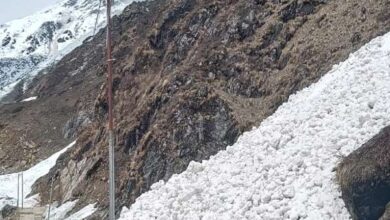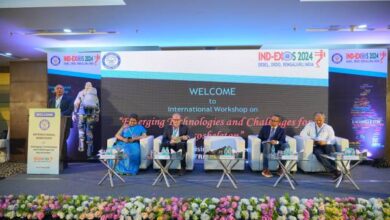Ozone pollution increases health hazard in Delhi-NCR

Due to heavy sunlight and severe heat, the risk of ozone pollution in the Delhi-NCR has also increased. According to data released by the Central Pollution Control Board (CPCB) on Sunday, the presence of ozone pollutants particles in the air of Delhi, Ghaziabad, Greater Noida and Gurugram were also recorded on Sunday. SAFAR India has also issued an alert for ozone. With more than two crore of Delhi’s population, NCR’s population is also vulnerable to Ozone pollution.
According to the information, air quality is measured on the basis of PM 10 and PM 2.5 in the air pollutants, but these days, the amount of ozone recorded in Delhi-NCR is greater threat than that of PM10 and PM 2. Ozone particles found on the surface are considered to be very dangerous for health.
According to the Air Quality Report released by CPCB on Sunday, the presence of ozone in the air of Ghaziabad, Greater Noida and Gururgram along with Delhi has been found. System of air quality and weather forecasting and research, ie SAFAR India, has also pointed to the presence of ozone in particular. Ozone prevention alert has also been issued to Delhi NCR residents. Delhi’s air quality has been heavy for a week, Delhi’s condition is particularly poor in case of ozone pollution. In the past week, it was just one day when ozone was not present in the air.
According to the CPCB, except for June 3 this week, ozone pollutants in the air have been present in excess quantities from fixed standards in all other days. Earlier, from 25 to 30 May, ozone pollution was present in the air.
How Ozone Pollution Is Produced
According to Vivek Chattopadhyay, air pollution expert at the Center for Science and Environment (CSE), the rays of extremely hot sunlight make the ozone pollutant by responding to the smoke from the vehicles. It is a kind of oxide. In addition to the smoke coming out of the vehicles, it is also produced from the burning of garbage or smoke from the industries.
Why Is Ozone Dangerous
In a report of the US Health Effect Institute in 2017, it was said that due to the increase in ozone, the death toll in India has increased by 148 percent. The direct impact of ozone falls on the lungs and chronic obstructive pulmonary disease (COPD). To avoid ozone, control over nitrogen oxides, carbon monoxide and organic compounds is essential.
People vulnerable to many diseases
Ozone is a hazardous gas and it can cause serious health problems in just a few hours. Ozone is the most dangerous for outdoor activities. It affects the person suffering from asthma, respiratory and lung diseases. Due to ozone, lung tissues are bad, chest pain, cough, headache, tightness in chest etc. Apart from this, it is also fatal for patients with diseases such as heart disease, bronchitis.
According to a report from the University of Southern California, children living in high ozone areas playing outdoors for three or more days, are more likely to get asthma than those who do not play outside. Ozone is a powerful oxidizer that damages cells. Children and adolescents are effected the most. This is the reason that premature mortality also increases. It also spoils the crops.
According to the CSE, the number of people suffering from asthma and lung related diseases in Delhi NCR, comprising of adolescents, children and farm workers, is very high. Therefore, there should be a plan to reduce emissions of gas in the action plan, in which vehicles, industries and power plants should be included in all.
2 to 3 PM most dangerous
In Delhi these days, the level of sunlight is at its peak between two o’clock and three o’clock. During this time the temperature is also the highest. During this severe sunshine, pollutants of ozone are also most commonly born, hence the risk of loss due to ozone is also the highest in this one hour.








